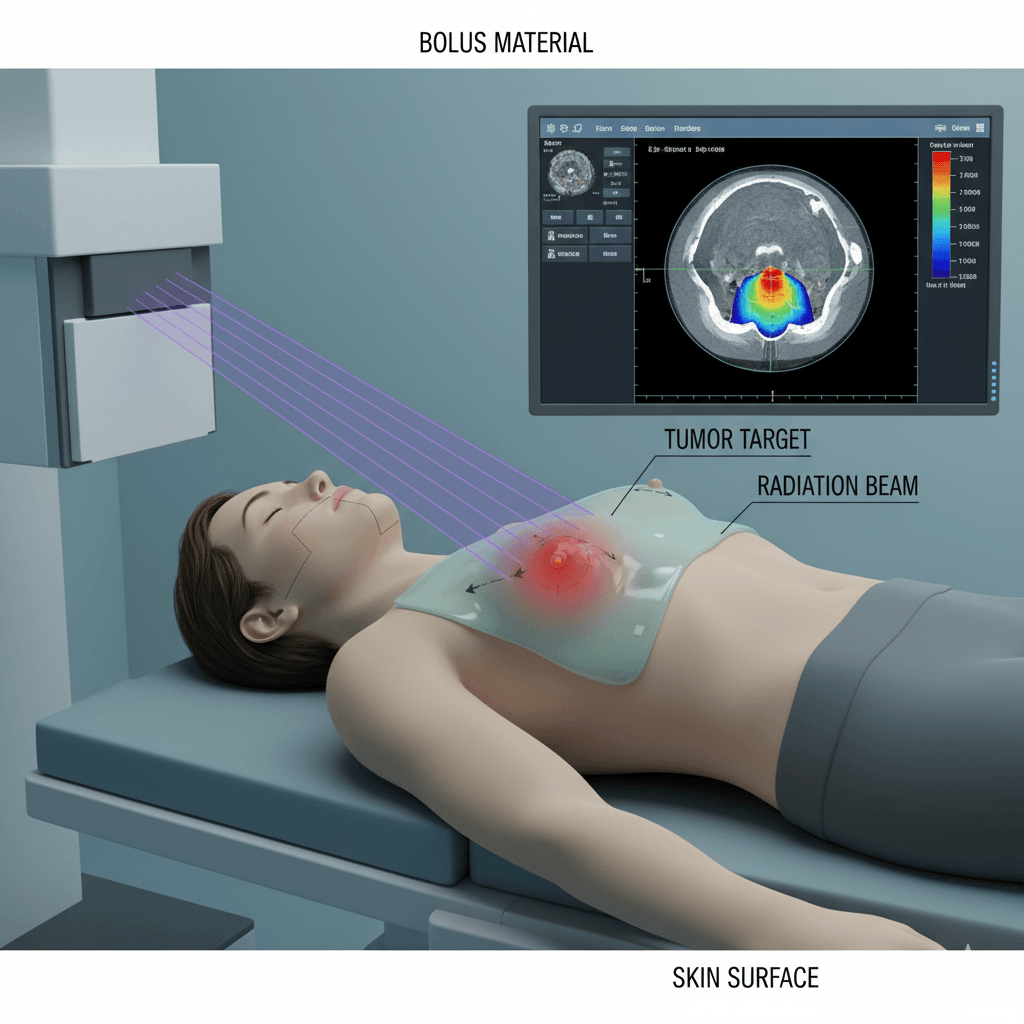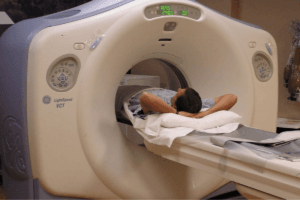
Bolus in Radiotherapy

Bolus in Radiotherapy Planning
Q1: What is a Bolus in Radiotherapy?
A: A bolus is a material used in radiotherapy to modify the dose of radiation delivered to the skin or superficial tissues. It’s often made of a gel-like or rubbery substance and is placed on the surface of the skin over the treatment area. The bolus acts like an extra layer of tissue, allowing the radiation to be delivered more effectively to tumors near the skin surface or to even out the dose across irregular surfaces.
Q2: Why is a Bolus used in Radiotherapy?
A: A bolus is used to ensure that the prescribed dose of radiation reaches the tumor or treatment area accurately, especially when the tumor is close to the skin. Without a bolus, the radiation might penetrate too deeply, missing the superficial tumor. The bolus brings the maximum dose of radiation closer to the skin’s surface, making it effective for treating tumors located just beneath the skin or in areas with uneven contours.
Q3: When is a Bolus necessary?
A: A bolus is necessary in several situations, including:
- Superficial tumors: Such as skin cancer, where the tumor is close to the surface and needs a higher dose of radiation at the skin level.
- Irregular surfaces: Areas like the nose, ears, or scars may require a bolus to ensure even radiation distribution.
- Post-surgery treatment: When a tumor has been surgically removed, and the goal is to target the surgical site where cancer cells might remain.
Q4: How does a Bolus work in Radiotherapy?
A: The bolus mimics tissue by absorbing some of the radiation and scattering it, effectively bringing the highest dose closer to the skin or superficial tissues. It helps to prevent the radiation from penetrating too deeply into the body, which is particularly important when the tumor or treatment area is at or near the surface.
Q5: What materials are used as a Bolus?
A: Bolus materials are typically made of substances that closely resemble human tissue in terms of density and radiation absorption. Common materials include:
- Gel sheets: Flexible and moldable to fit the contours of the body.
- Wax or paraffin blocks: Used for custom-made boluses to fit specific areas.
- Commercial bolus materials: Pre-manufactured, such as Superflab, which is made of a soft, flexible material.
Q6: How is a Bolus applied during Radiotherapy?
A: The bolus is placed directly on the patient’s skin over the treatment area before each radiotherapy session. It may be secured with medical tape or other methods to ensure it stays in place during treatment. The radiotherapy team will carefully position the bolus to match the treatment plan, ensuring the radiation is delivered accurately.
Q7: Are there any side effects or discomfort associated with using a Bolus?
A: Using a bolus is generally safe and should not cause significant discomfort. However, because it brings the radiation dose closer to the skin, some patients might experience skin irritation, redness, or dryness in the treated area. These side effects are usually temporary and can be managed with appropriate skin care recommended by your healthcare team.
Q8: How do I know if a Bolus is needed for my treatment?
A: Your radiation oncologist will determine if a bolus is necessary based on the location, depth, and type of your tumor, as well as your overall treatment plan. If a bolus is required, your healthcare team will explain how it will be used and what you can expect during your radiotherapy sessions.
If you have more questions about the use of a bolus in your radiotherapy treatment, talk to your healthcare provider. They can provide specific information tailored to your treatment plan and help you understand the role of a bolus in achieving the best possible outcome.
Related Post


CyberKnife
August 6, 2024

Immunotherapy
August 7, 2024

MRI Linac
August 7, 2024

Gamma Knife
August 7, 2024

Cancer Screening
August 22, 2024
Gallery
Click below to book a clinic appointment
Ask More Questions Send Query On Email





